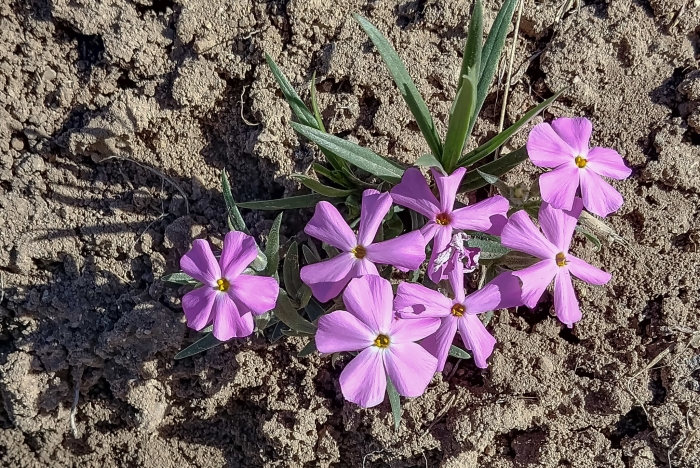Longleaf Phlox
(Phlox longifolia)
Longleaf Phlox (Phlox longifolia)
/
/

Rolf Lawrenz
CC BY 4.0
Image By:
Rolf Lawrenz
Recorded By:
Copyright:
CC BY 4.0
Copyright Notice:
Photo by: Rolf Lawrenz | License Type: CC BY 4.0 | License URL: http://creativecommons.org/licenses/by/4.0/ | Rights Holder: Rolf Lawrenz | Publisher: iNaturalist | Date Created: 2018-04-28T10:19:45-07:00 |













































Estimated Native Range
Summary
Phlox longifolia, commonly known as Longleaf Phlox, is a deciduous perennial herb native to a variety of habitats including open woodlands, grasslands, and scrub areas in the Intermountain West of the United States. It typically reaches a height and width of 1-2 feet (0.3-0.6 meters), forming a mound of narrow, needle-like leaves. The plant is notable for its clusters of fragrant flowers that come in shades of pink, purple, and white, blooming profusely in the spring and attracting pollinators such as butterflies and hummingbirds.
Longleaf Phlox is valued for its drought tolerance and ability to thrive in poor soils, making it an excellent choice for rock gardens, borders, and native plantings. It is also used for its ornamental flowers, which add a splash of color in the spring. This Phlox species prefers well-drained soils and can tolerate a range of light conditions from full sun to partial shade. While it is generally low-maintenance, it can be susceptible to powdery mildew and spider mites, especially when air circulation is poor or in overly moist conditions. To maintain its health and vigor, it is recommended to provide good air circulation and avoid overhead watering.CC BY-SA 4.0
Longleaf Phlox is valued for its drought tolerance and ability to thrive in poor soils, making it an excellent choice for rock gardens, borders, and native plantings. It is also used for its ornamental flowers, which add a splash of color in the spring. This Phlox species prefers well-drained soils and can tolerate a range of light conditions from full sun to partial shade. While it is generally low-maintenance, it can be susceptible to powdery mildew and spider mites, especially when air circulation is poor or in overly moist conditions. To maintain its health and vigor, it is recommended to provide good air circulation and avoid overhead watering.CC BY-SA 4.0
Plant Description
- Plant Type: Herb
- Height: 0.5-1.5 feet
- Width: 1-1.5 feet
- Growth Rate: Slow
- Flower Color: Pink, Purple, White
- Flowering Season: Spring
- Leaf Retention: Deciduous
Growth Requirements
- Sun: Full Sun, Part Shade
- Water: Medium, High
- Drainage: Fast, Medium
Common Uses
Bee Garden, Bird Garden, Butterfly Garden, Fragrant, Groundcover, Hummingbird Garden, Low Maintenance, Showy Flowers
Natural Habitat
Open woodlands, grasslands, and scrub areas in the Intermountain West of the United States
Other Names
Common Names: Long-Leaved Phlox , Phlox À Feuilles Longues
Scientific Names: Phlox longifolia , Phlox longifolia var. longifolia , Phlox longifolia subsp. typica , Phlox speciosa var. stansburyi , Phlox longifolia subsp. marginata , Phlox longifolia var. filifolia , Phlox visenda , Phlox longifolia var. brevifolia , Phlox cernua , Phlox marginata
GBIF Accepted Name: Phlox longifolia Nutt.